Cultural Heritage Laboratory
- Home
- Instruments and Personnel
- Methods and Applications
- Project and Scientific Interests
- Pubblications

The knowledge of materials and the development of conservation methods of historical-architectural and artistic artifacts are two important conditions for the preservation of this cultural heritage.
The material knowledge provides lot of information such as the type and provenience of the materials, the execution technique of the artwork, the realization of previous conservation treatments and the possible causes of alteration, giving, therefore, useful operational guidance for future restorations.
Conservation methods are essentially based on the application of suitable and durable products on stone artifacts or paintings; these must be able to protect the cultural asset from attack by atmospheric or environmental agents (protective products) or improve its mechanical properties (aggregating or consolidating agents).
The Cultural Heritage lab, operating since 2013, is dedicated to the study of the conservation methods of stone artifacts ( through the design and development of new compounds and formulations), as well as to the chemical, mineralogical and physical characterization of stone and painted surfaces.
INSTRUMENTS AND TOOLS
- Perkin Elmer FTIR Spectrometer model Spectrum 1000
- Heraeus Climatic Chamber model HC 4030, equipped with a UV lamp, an acid resistant internal chamber and a system for mass flow control of acidic gases (SO2 e NOx)
- Stirrers/heaters
- Memmert oven
- Cell for measuring the vapor permeability (“bicchierino” method ) of rocks, mortars and ceramics
- Equipments for the measure of the absorption of water in rocks and other porous systems (capillary absorption method and "pipette" method)
- System for the realization of vacuum / nitrogen atmosphere in chemical reactions sensitive to oxygen and moisture
- Vacuum pumps of various types
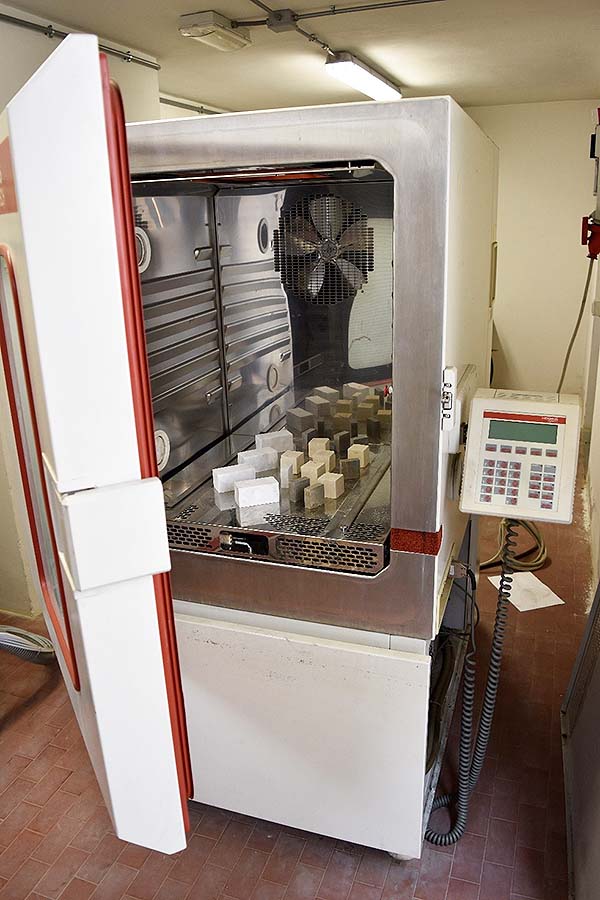
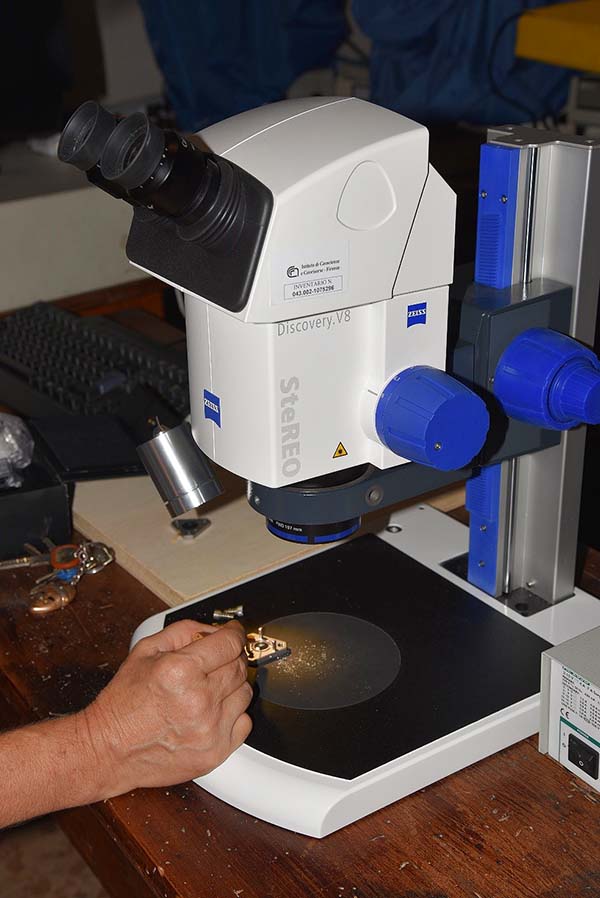
METHODS
- Design and development of new compounds for the protection and consolidation of natural and artificial stones
- Design and formulation of new composites for the conservation of stone artifacts
- Determination of water vapor permeability of porous systems (UNI-EN 15803: 2010)
- Determination of water absorption in porous materials by the capillary absorption method (EN 15801: 2010) or "pipette" method (Normal 44/93)
- Determination of porosity to water of porous samples (rocks, mortars, ceramics) of any geometric shape by means of imbibition under vacuum
- Accelerated aging tests in a climatic chamber through cycles of temperature and humidity variations, UV irradiation or acid environment created with acidic gases (SO2 and NOx gases)
- Preparation of polished cross sections of pictorial layers for observations to stereo microscope and SEM-EDS investigations
- Chemical and/or mineralogical characterization, by FTIR, of the new synthesized or formulated products, of newly formed compounds on stone artifacts, of pigments and binders of pictorial artifacts
- Chemical and/or mineralogical characterization of stone and painted surfaces through innovative investigations (hyperspectral techniques, in collaboration with the Department of Earth Sciences, University of Florence)
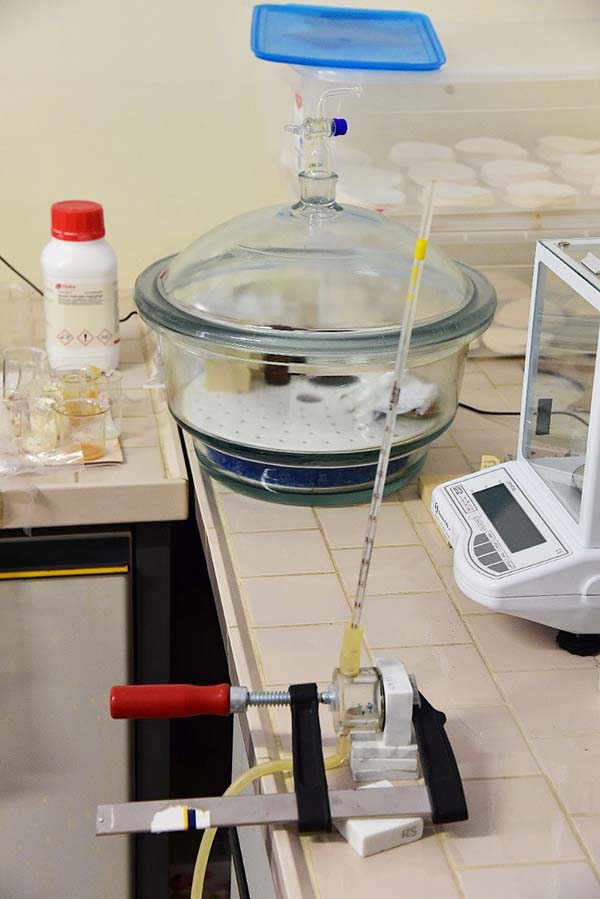
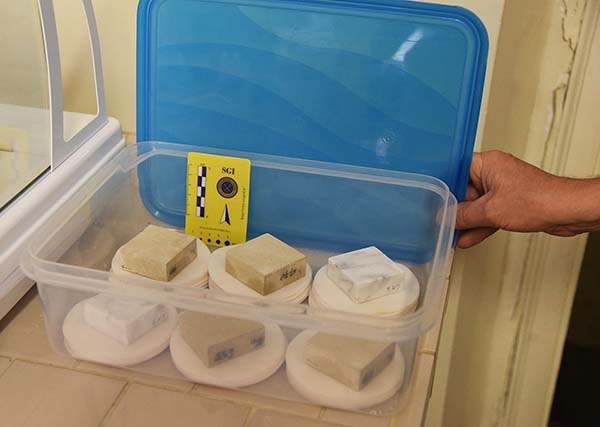
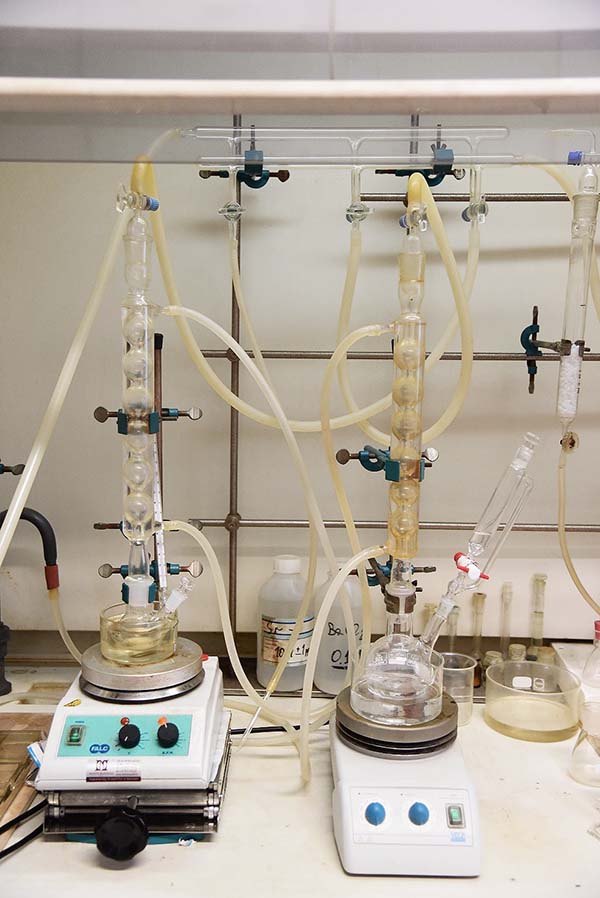
PROJECTS
The laboratory, since its creation in 2013, has been involved in several projects, including:
- POR Sardegna (L.R. 7 agosto 2007, n.7 – CUP F71J1100620002 ): “Romanico e territorio. I materiali costruttivi delle chiese della Sardegna giudicale: nuovi approcci per la valorizzazione, la conservazione e il restauro”. Within this project, studies aimed at the selection of commercial products to be used in the consolidation and protection of stone historical buildings of Sardinia were conducted.
- Restoration of the Facade of Santa Maria di Nazareth (Scalzi) - Venice: The project is still in progress. Suggestions for to the consolidation and protection of the marble facade will be provided.
- Various archaeometric investigations, including: a) FTIR and SEM-EDS investigations for the identification of pigments and binders in the painting "Christ before Pilate" of Borrassa, owned by the North Carolina Museum of Art (Raleigh, NC, USA); b) FTIR and SEM-EDS investigations for the characterization of painted layers sampled on two paintings owned by the North Carolina Museum of Art (Raleigh, NC, USA); the analyses were finalized to the attribution to Lorenzo Lotto; c) FTIR investigations of ceramic samples from the “Fregio delle Opere della Misericordia”, a polychrome terracotta in the ancient Hospital of Ceppo in Pistoia (research funded by University of Urbino).
SCIENTIFIC INTEREST
- Modeling of degradation of stone artworks and the durability of conservation treatments
- Archaeometric investigations
SELECTED PUBLICATIONS
- M. Camaiti, V. Bortolotti, P. Fantazzini, (2015), “Stone porosity, wettability changes and other features detected by MRI and NMR relaxometry: a more than 15-year study”, Magn. Reson. Chem., 53, 34–47 published online 16 October 2014 - DOI: 10.1002/mrc4163.
- A. Andreotti, W.P. Brown, M. Camaiti, M.P. Colombini, A. DeCruz, (2016), “Diagnosis of materials and effectiveness of Er:YAG Laser cleaning in a Borrassa's Panel Painting (15th Cent.)”, Applied Physics A, 122, 572 (12 pages). DOI: 10.1007/s00339-016-0100-1
- D. Ciofini, J. Striova, M. Camaiti, S. Siano (2016), “Photo-oxidative kinetics of solvent and oil-based terpenoid varnishes”, Polymer Degradation and Stability, 123, 47-61. doi:10.1016/j.polymdegradstab.2015.11.002
- M. Camaiti, M. Benvenuti, P. Costagliola, F. Di Benedetto, S. Moretti, "Hyperspectral sensors for the characterization of Cultural Heritage surfaces", Book chapter, Springer....in press
- C. Wang, T. Salvatici, M. Camaiti, C. Del Ventisette, S. Moretti (2016), "A new application of hyperspectral radiometry: the characterization of painted surfaces", Vol 18, EGU2016-18255-1